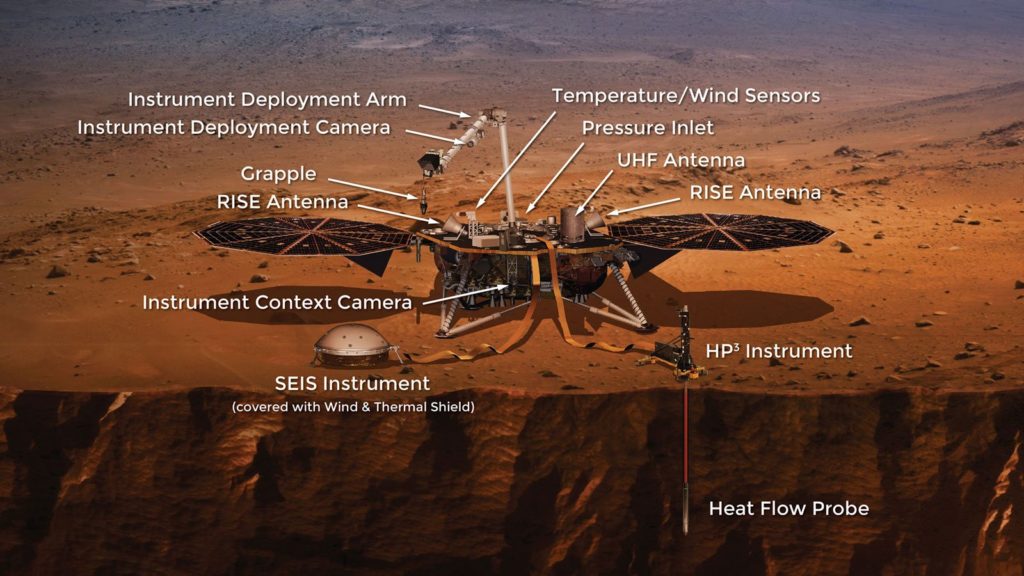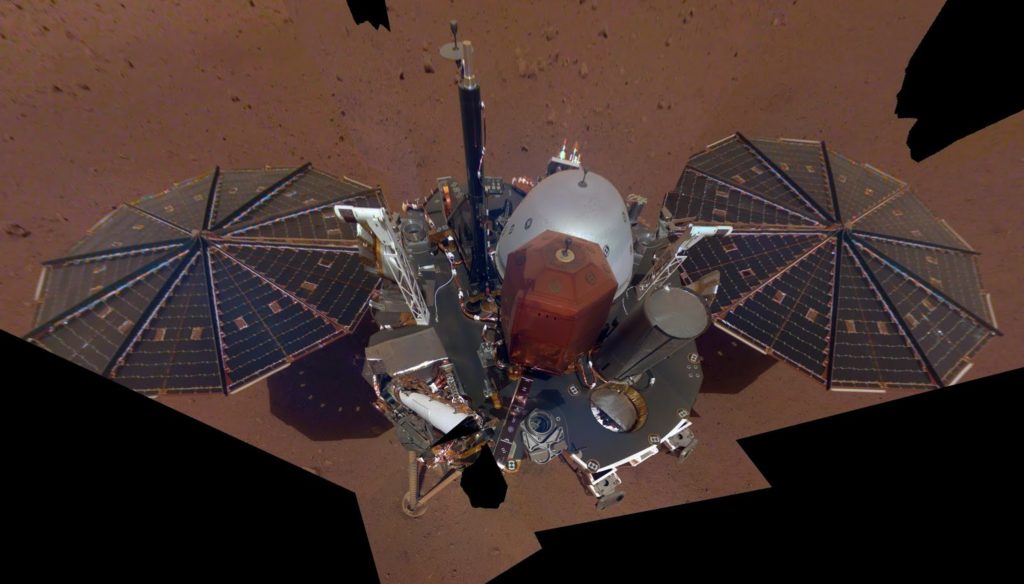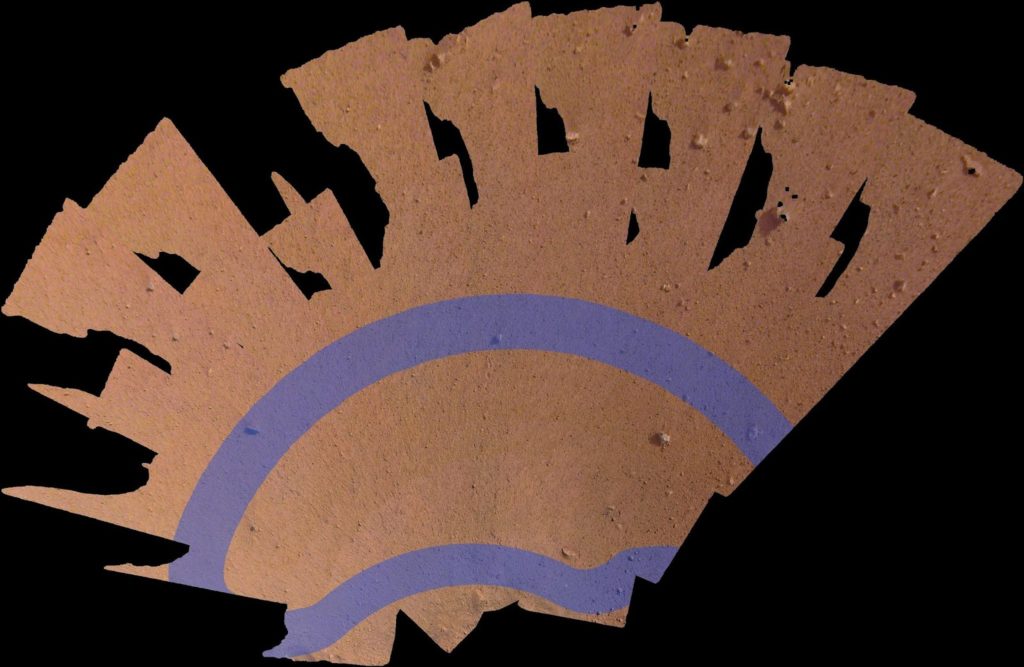Kremer —SpaceUpClose.com & RocketSTEM –11 December
2018
CAPE CANAVERAL, FL – NASA’s newest probe on Mars – the InSight
lander – has snapped its first selfie on the Red Planet and its truly eyepopping
– showing virtually the entire robot in all its glory including the science and
weather instruments on the deck and the twin solar panels spreading out on each
side looking like circular fans.
“NASA’s InSight lander isn’t camera-shy,” announced
NASA in a press release accompanying the selfie mosaic on Dec 11.
“First #selfie! I’m feeling healthy, energized and whole. This is me on
#Mars,”
the robot tweeted about herself.
The selfie is comprised of a mosaic of 11 images taken on Dec. 6, 2018 (Sol 10) taken by one of two on
board cameras – namely the IDD or Instrument Deployment Device, and assembled
together by the science and engineering team.
The two week old lander looks quite beautiful sitting atop the Elysium Planitia landing site specifically selected to be
boring as possible – it’s a smooth flat plain with as few rocks as possible because
top priority was to land safely.
Unlike all of NASA’s previous robotic Martian rovers and landers InSight’s
mission is to dig deep beneath the Red Planets surface to listen for the
heartbeat of the Red Planet – rather
than survey and investigate rocks and soils above or just below the surface.
“The near-absence of rocks, hills and holes
means it’ll be extremely safe for our instruments,” said InSight’s Principal
Investigator Bruce Banerdt of NASA’s Jet Propulsion Laboratory in Pasadena,
California, in a statement.
“This might seem like a pretty plain piece
of ground if it weren’t on Mars, but we’re glad to see that.”
“InSight’s landing team deliberately chose a
landing region in Elysium Planitia that is
relatively free of rocks. Even so, the landing spot turned out even better than
they hoped. The spacecraft sits in what appears to be a nearly rock-free
“hollow” — a depression created by a meteor impact that later filled
with sand.”
The team says that that’s really advantageous
for one of InSight’s instruments, the German supplied heat-flow probe (HP3)
, since it should be easier for it to accomplish its goal to bore down about 16 feet (5 meters) below the surface.
Along with the selfie, the team also released a
mosaic showing the first complete look of the workspace in front of the lander where InSight
will use its robotic arm to deploy its two main instruments over the next few
months – namely HP3
and SEIS.
rocks and measures approximately 14-by-7-foot (4-by-2-meter).
The workspace mosaic is composed of 52
individual photos.
“In the coming weeks, scientists and engineers
will go through the painstaking process of deciding where in this workspace the
spacecraft’s instruments should be placed,” says the InSight team.
“They will then command InSight’s robotic arm to
carefully set the seismometer (called the Seismic Experiment for Interior
Structure, or SEIS) and heat-flow probe (known as the
Heat Flow and Physical Properties Package, or HP3) in
the chosen locations. Both work best on level ground, and engineers want to
avoid setting them on rocks larger than about a half-inch (1.3 cm).”
 |
| Annotated graphic of InSight instruments and hardware. Credit: NASA |
InSight soft landed
on Mars barely two weeks ago on Nov 26, 2018, following a 7 month, 301 million
mile (484 million km) interplanetary journey from Earth. She now starts a 2-year
mission to explore the Red Planet’s mysterious deep interior.
Watch for Ken’s continuing
onsite coverage of NASA, SpaceX, ULA, Boeing, Lockheed Martin, Northrop Grumman
and more space and mission reports direct from the Kennedy Space Center, Cape
Canaveral Air Force Station, Florida and Wallops Flight Facility, Virginia.
Stay tuned here for Ken’s continuing Earth and
Planetary science and human spaceflight news: www.kenkremer.com
–www.spaceupclose.com – twitter @ken_kremer – email: ken at kenkremer.com
Dr. Kremer
is a research scientist, journalist and photographer based in the KSC area.
………….
Ken’s photos are for sale and he is available for lectures and outreach events
InSight Lander, SpaceX Falcon 9/CRS-16 launch to ISS, NASA missions, ULA Atlas & Delta
launches, SpySats and more at Ken’s upcoming outreach events at Quality Inn Kennedy Space Center, Titusville,
FL, evenings:
15/17: “SpaceX Dragon CRS-16
resupply launch to ISS, SpaceX Falcon GPS 3-01, SpaceX Falcon Heavy &
Falcon 9 launches, upcoming SpaceX Falcon 9 USAF GP3 3-01, NRO & USAF
Spysats, SLS, Orion, Boeing and SpaceX Commercial crew capsules, OSIRIS-Rex,
Juno at Jupiter, InSight Mars lander, Curiosity and Opportunity explore Mars,
NH at Pluto, Kuiper Belt and more,” Kennedy Space Center Quality Inn, Titusville,
FL, evenings. Photos for sale



